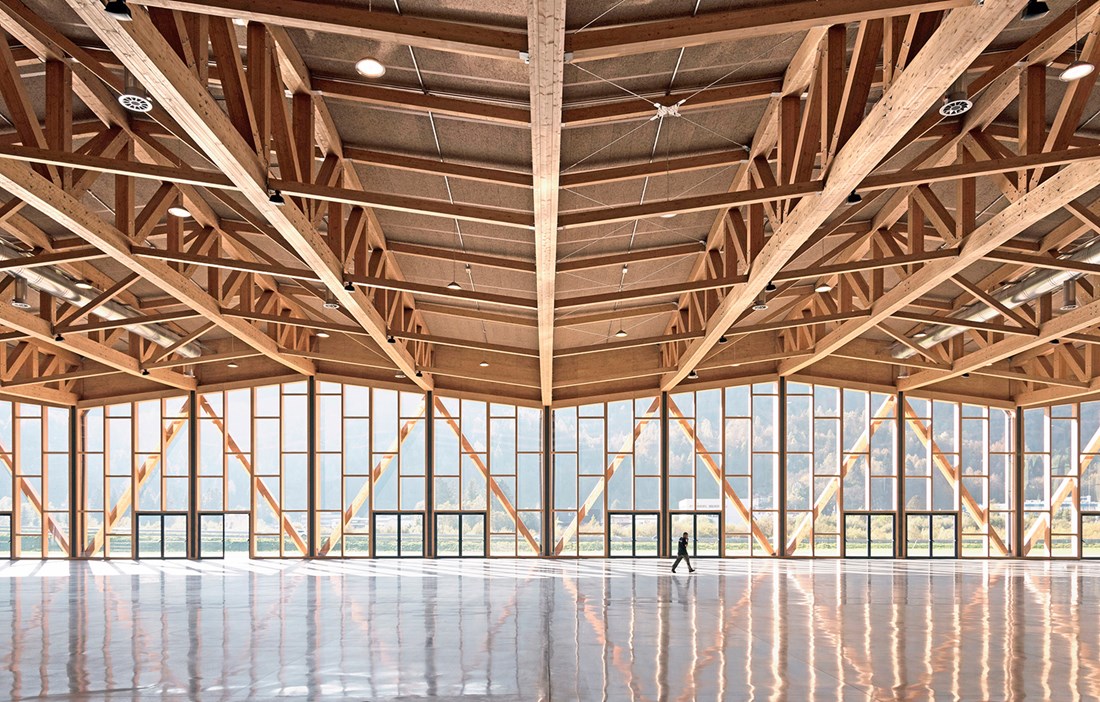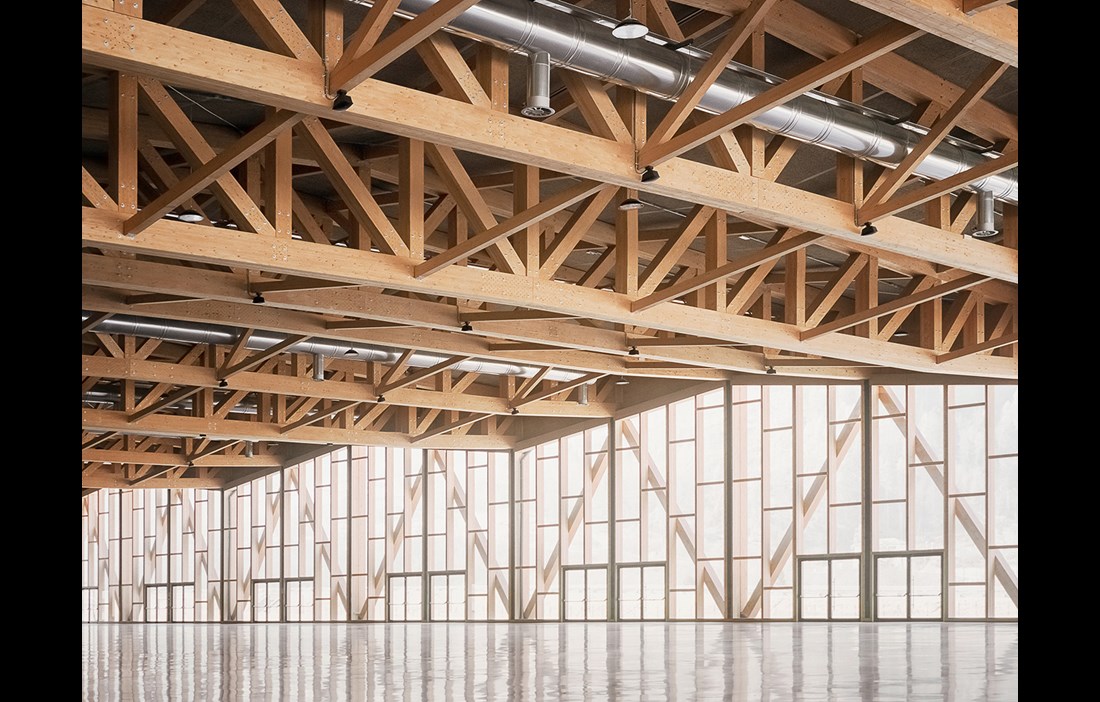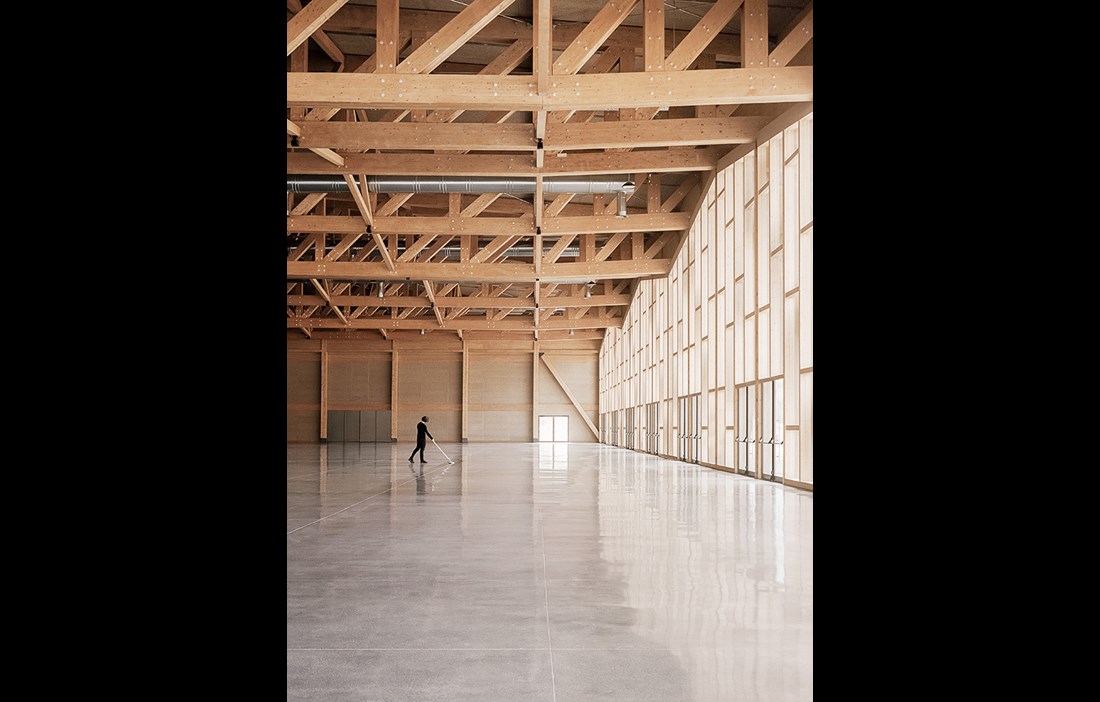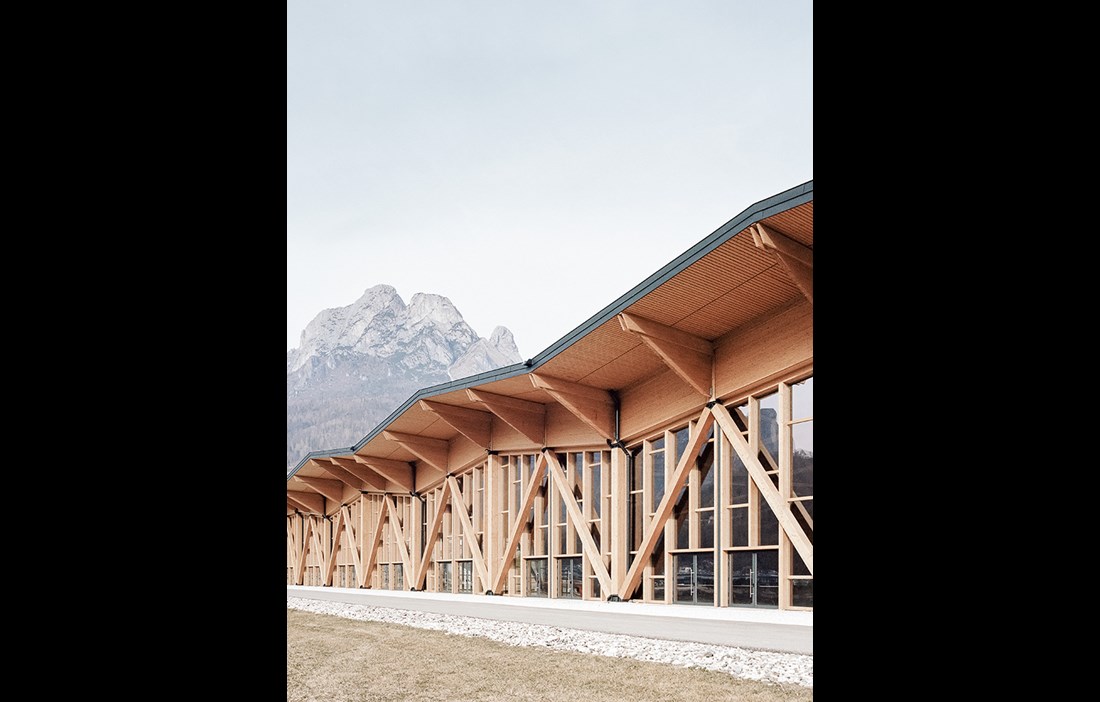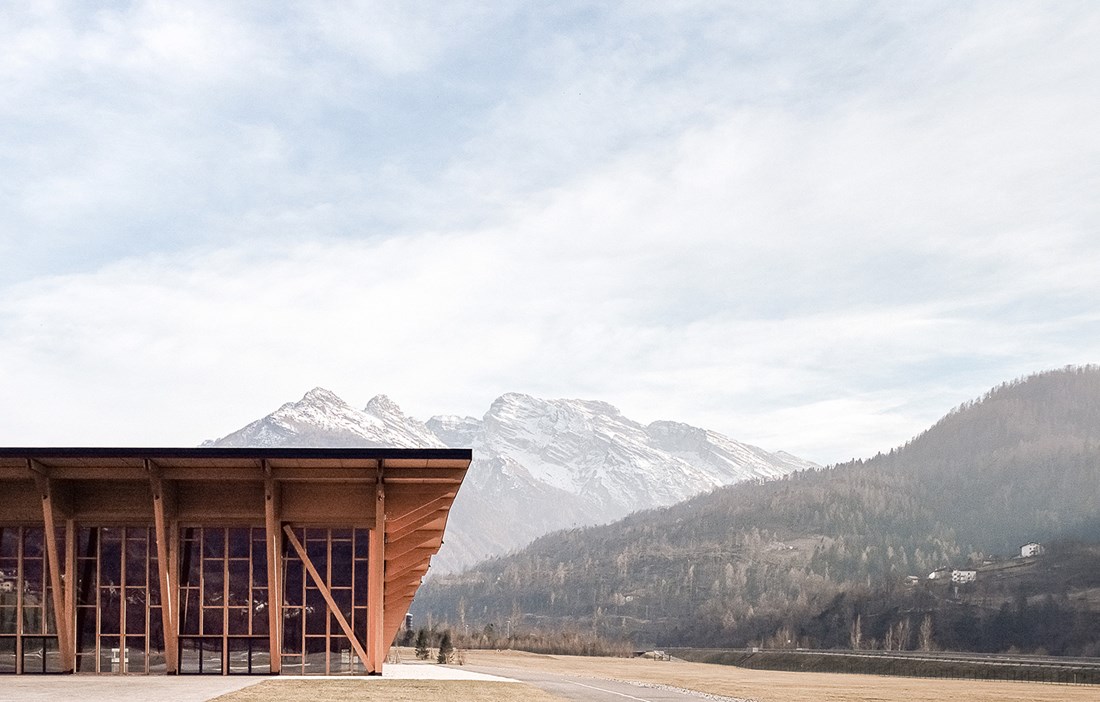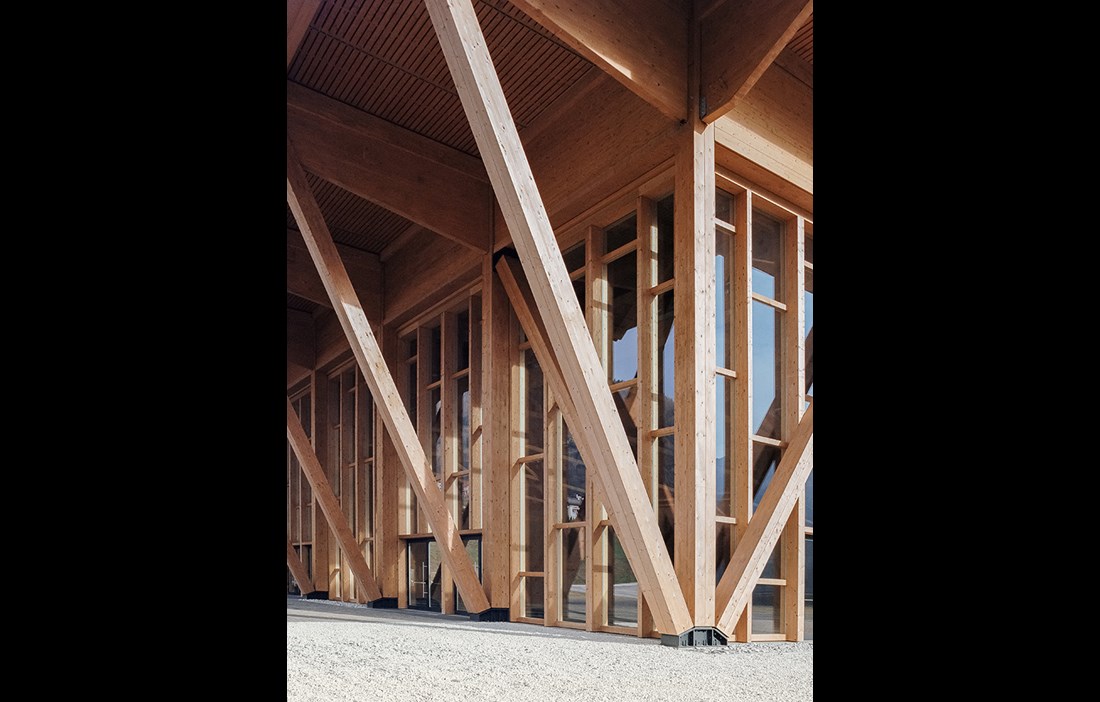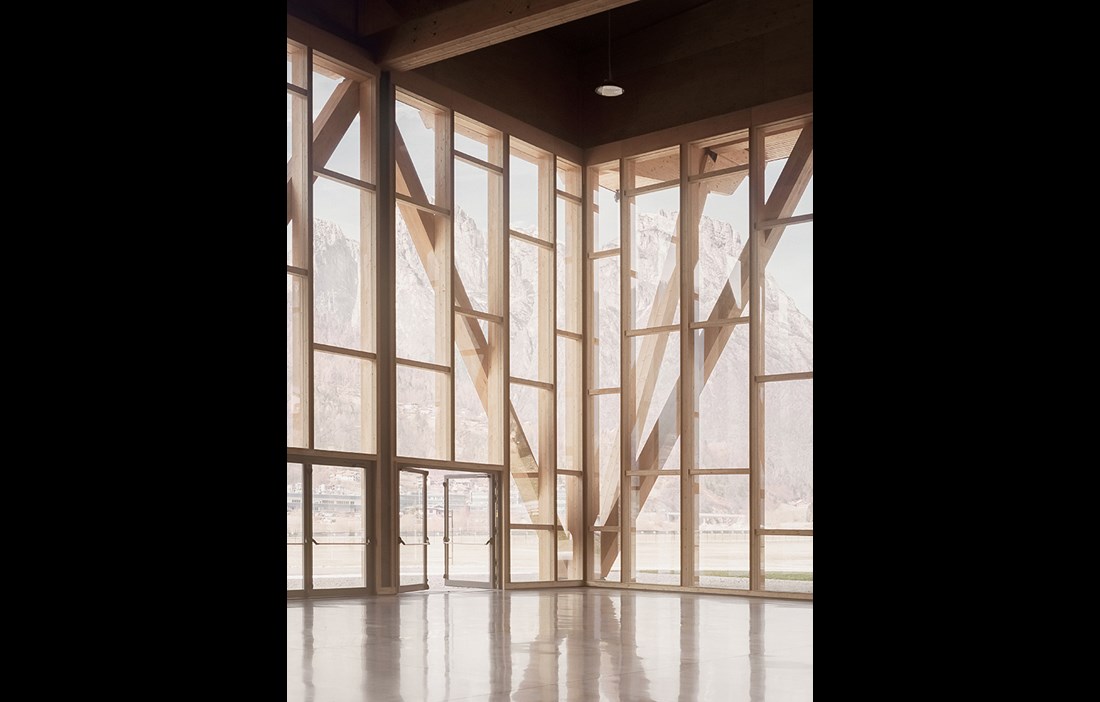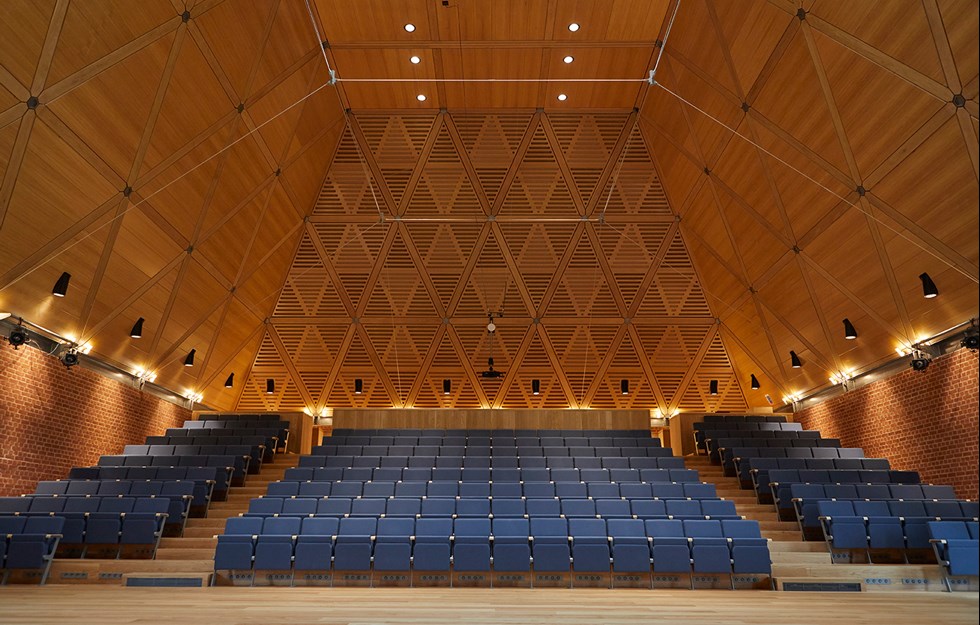In the Italian town of Agordo, a new and versatile exhibition centre melts into the expansive alpine landscape. Built entirely in wood, with high ceilings and generous windows, it makes the limestone peaks of the Dolomites a constant and tangible presence. Playful, airy, considered and aesthetically attractive, the large exhibition hall really grabs the attention.
The client wanted a generously sized and multifunctional building that interacts with the surrounding landscape. And so it was.
The project is the work of two architectural practices, Studio Botter in Agordo and Studio Bressan from nearby Montebelluna. The owners, Andrea Botter and Emanuele Bressan, studied together at university in Venice and have been collaborating since 2010.
Their shared aim is to combine tradition with innovation, often with the inclusion of wood as a versatile material well suited to many of their construction projects, both for environmental reasons and for the building’s design and structure.
“We share the same vision of a modus operandi that interacts with the setting, where we place an extra focus on material choices and approach the project based on economic and ecological sustainability,” explains Emanuele Bressan.
Here, the two architects took inspiration from the Alpine backdrop to the urban context of the plot. The most striking feature is a wavy roof that sets the tone for the project’s design language, drawing on the area’s topography and traditional style of building.
The architects chose wood as the main building material because it is both environmentally and aesthetically attractive, and sits comfortably with the older buildings that are common in the Alpine valleys. Added to that are the acoustic benefits and the option of recycling.
The acoustic properties of wood were an important argument in its favour, considering the kinds of activities the premises are intended to host – concerts, trade shows, theatre, lectures, sport, conferences and exhibitions.
“We presented an early proposal that the client accepted, and we then developed it in collaboration with specialists in large wooden structures,” explains Emanuele Bressan.
The foundation slab is cast in concrete, which has been polished and given an anti-slip treatment so it can serve as the interior floor of the large exhibition hall.
The load-bearing structure of posts, beams and roof trusses is made of glulam. The exception is the steel braces and tie-rods, partially clad in wood, that stabilise the building and are anchored in plinths and in the concrete support wall at the rear. The beams also use steel struts to connect to this wall, which is 3.6 metres high and 70 centimetres thick.
“The steel elements provide an extra guarantee in the event of fire, while the support wall helps to take up the force of strong side winds and any earthquakes,” says Emanuele Bressan.
The walls are designed as a system of wooden frames coupled with posts and diagonal braces that carry the weight of the roof structure.
This in turn is made up of heavy-duty trusses that span over 50 metres, creating a completely open interior that is 100 metres long, with no posts to limit the building’s flexibility.
The walls to the north and west are glazed from floor to ceiling, with unrestricted views of the surrounding Alpine landscape, while the projecting roof (reaching over 8 metres on the north face of the building) screens the large hall from direct sunlight in the summer. In the winter, the low sun shines in, so that overall the cost of both heating and cooling is lower through the year. The generous roof overhang also protects both guests and walls from the full force of the weather. To the south and east, the external walls are clad in sheet metal, and the interior is lined with panels of tobacco-coloured wood wool.
The ceiling height in this almost cathedral-like exhibition hall is said to be between 12.7 and 14.3 metres, although in reality the clear height is somewhat lower at 8 to 9.6 metres, depending on the dimensions of the trusses and beams in the roof.
In addition to the main exhibition hall, which runs from north to south, there are areas for toilets, offices, storage and deliveries collected along the east section of the building.
This creates huge flexibility, with thousands of square metres of available floorspace that can easily be divided up into several smaller rooms.
The mechanical and technical installations are hidden away one level up at the back of the building, in order not to encroach on the visual appearance of the exhibition centre.
The roof comprises prefabricated wooden panels, clad internally with wood fibre boards and externally with corrugated sheet aluminium.
Visually, the recurring diagonal elements of the structure and the rhythm of the roof echo the jagged silhouette of the Dolomites. It is effortlessly light and airy, despite the impressive dimensions of the ventilation ducts and the glulam elements that support the roof and walls.
“Getting the building to reflect the landscape it sits in has been one of the main focuses of the project, and I believe we’ve succeeded in that,” says Emanuele Bressan.
He also stresses that the whole of the distinctive and remarkably attractive building project has been possible thanks to the use of prefabricated elements, which has meant short construction times and high precision during assembly.
All the beams, braces and trusses were produced in a factory and then shipped to the construction site for installation. The posts and ties were also delivered prefabricated, assembled and lifted into place by crane.
There was no need for any additional decoration, beyond what the painted and weathered wooden structure offers. According to Emanuele Bressan, the structure’s own aesthetic would not benefit from any additions to its appearance.
“The structural frame and the mountainous landscape of the Dolomites interact. Together they create a spatial continuity that draws the eye to the surrounding mountains, without lessening the building’s own impact.”
Text Mats Wigardt

